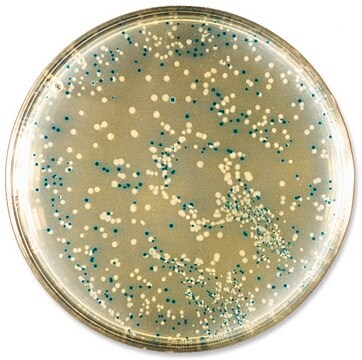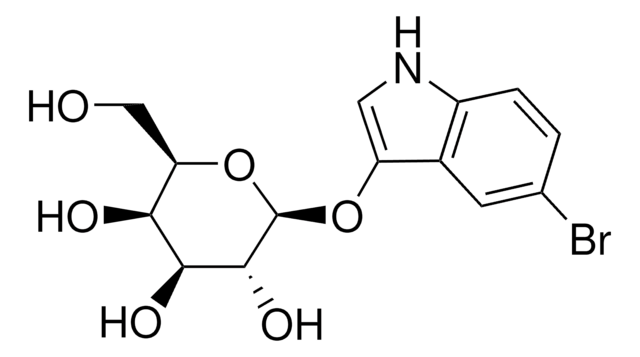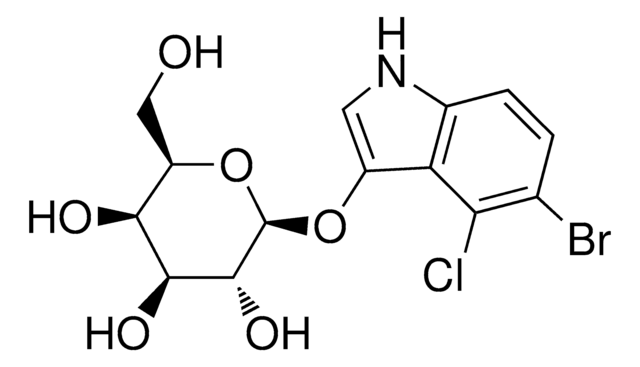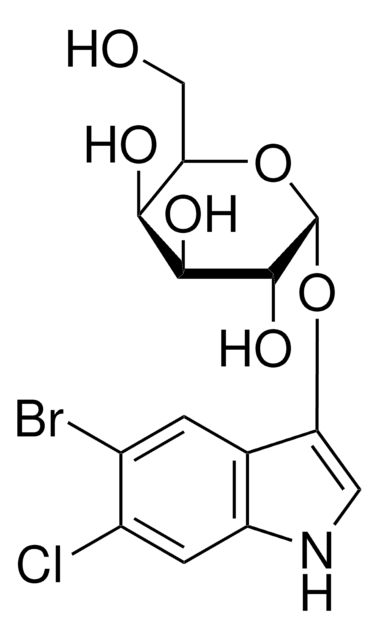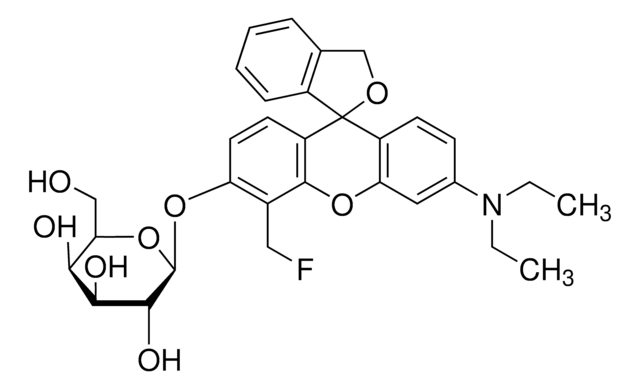S9811
S-Gal®
reagent for selection of recombinant bacterial clones
Sinônimo(s):
3,4-Cyclohexenoesculetin β-D-galactopyranoside
About This Item
Produtos recomendados
grau
for molecular biology
Nível de qualidade
esterilidade
non-sterile
Ensaio
≥95% (HPLC)
forma
powder
solubilidade
DMF: 50 mg/mL
adequação
suitable for β-galactosidase test
temperatura de armazenamento
room temp
cadeia de caracteres SMILES
OC[C@H]1O[C@@H](Oc2cc3OC(=O)C4=C(CCCC4)c3cc2O)[C@H](O)[C@@H](O)[C@H]1O
InChI
1S/C19H22O9/c20-7-14-15(22)16(23)17(24)19(28-14)27-13-6-12-10(5-11(13)21)8-3-1-2-4-9(8)18(25)26-12/h5-6,14-17,19-24H,1-4,7H2/t14-,15+,16+,17-,19-/m1/s1
chave InChI
HDJJDRXZHJRVGA-DIKXUDHVSA-N
Descrição geral
Aplicação
Características e benefícios
- More intense color contrast than X-gal
- Excellent for use in automated colony counters
- Autoclavable for easiest use
- No need to make stock solutions
Outras notas
formulation. A medium prepared with S-Gal® is moderately dark due to the presence of ferric ammonium citrate. This darker background often provides enhanced contrast for automated colony counting or isolation.
Princípio
Reconstituição
Informações legais
produto relacionado
Palavra indicadora
Warning
Frases de perigo
Declarações de precaução
Classificações de perigo
Eye Irrit. 2 - Skin Irrit. 2 - STOT SE 3
Órgãos-alvo
Respiratory system
Código de classe de armazenamento
11 - Combustible Solids
Classe de risco de água (WGK)
WGK 3
Ponto de fulgor (°F)
Not applicable
Ponto de fulgor (°C)
Not applicable
Equipamento de proteção individual
dust mask type N95 (US), Eyeshields, Gloves
Certificados de análise (COA)
Busque Certificados de análise (COA) digitando o Número do Lote do produto. Os números de lote e remessa podem ser encontrados no rótulo de um produto após a palavra “Lot” ou “Batch”.
Já possui este produto?
Encontre a documentação dos produtos que você adquiriu recentemente na biblioteca de documentos.
Artigos
General protocols for growth of competent cells and their transformation (uptake of DNA).
Protocolos
Technical Article on competent cells. Transformation is a process by which some bacteria take up foreign genetic material (naked DNA) from the environment.
Nossa equipe de cientistas tem experiência em todas as áreas de pesquisa, incluindo Life Sciences, ciência de materiais, síntese química, cromatografia, química analítica e muitas outras.
Entre em contato com a assistência técnica